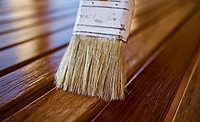FUSE Automotive Coloring System Recognized by Nikkei Asia

COLUMBUS, OH – AERO Sustainable Material Technology recently announced that the FUSE Automotive Coloring System, known as the Ultra-Wide TOM Machine, won a grand prize at the 2021 Nikkei Superior Products and Services Awards from the Asian news magazine Nikkei Asia. The awards were presented on Feb. 2, 2022, in Tokyo, Japan. An environmentally sound alternative to the assembly-line process of traditional paint, the Ultra-Wide TOM Machine is an efficient system for coating automotive body panels and other exterior components by applying AERO’s environmentally sound film-based coatings.
The Ultra-Wide TOM Machine incorporates new Neo-TOM Thermoforming technology, which was developed by Fu-se Vacuum Forming Co. Ltd. (FVF) in Osaka, Japan. This recently developed process addresses the difficulties of traditional compressed air thermoforming where hollow parts (such as an automotive hood) cannot withstand the air pressure, resulting in deformation. With Neo-TOM, the film is heated and softened in a vacuum and placed close to the component to allow air to be introduced to the front side of the film, and then the air pressure difference between the inside and outside of the film causes the film to be attached to the component without deformation. Although this process has been previously utilized for automotive interior components, it had been difficult to apply films uniformly on large automotive parts until the advent of the FVF Neo-TOM process.
“This world’s largest Ultra-Wide TOM Machine using AERO’s environmentally sustainable film-based coating technology, has the ability to uniformly coat large parts and therefore entire automotive vehicle bodies,” said Jim McGuire, CEO of AERO Sustainable Material Technology Inc. “The amount of electricity used can be reduced to one-third or less compared to the conventional method of painting and drying repeatedly. Incorporating the Ultra-Wide TOM Machine with AERO Sustainable Material Technology for coating vehicles will revolutionize the automotive industry with cost savings, energy savings and numerous environmental benefits.”
The environmental impact of AERO’s product life cycle is less damaging than traditional paint. Manufacturing and application of traditional paint requires significant energy and resources, whilst generating harmful pollutants, such as carbon dioxide and VOCs. Additionally, traditional assembly lines use large volumes of water — particularly during exterior decoration. By generating lower application costs, while requiring little to no capital expenditure, AERO can accelerate throughput times and enable broader options in custom color and finish, including contrast roof and other contrast options.
Additionally, AERO technology does not particulate, so does not contribute to increasing levels of ocean pollution. AERO finishes are reported to produce zero CO2, are free from VOCs, PVC, and solvents, while requiring zero water during manufacturing, application and usage.
For more information, visit http://www.fvf.co.jp/eng/technology/index9.html.
Looking for a reprint of this article?
From high-res PDFs to custom plaques, order your copy today!






